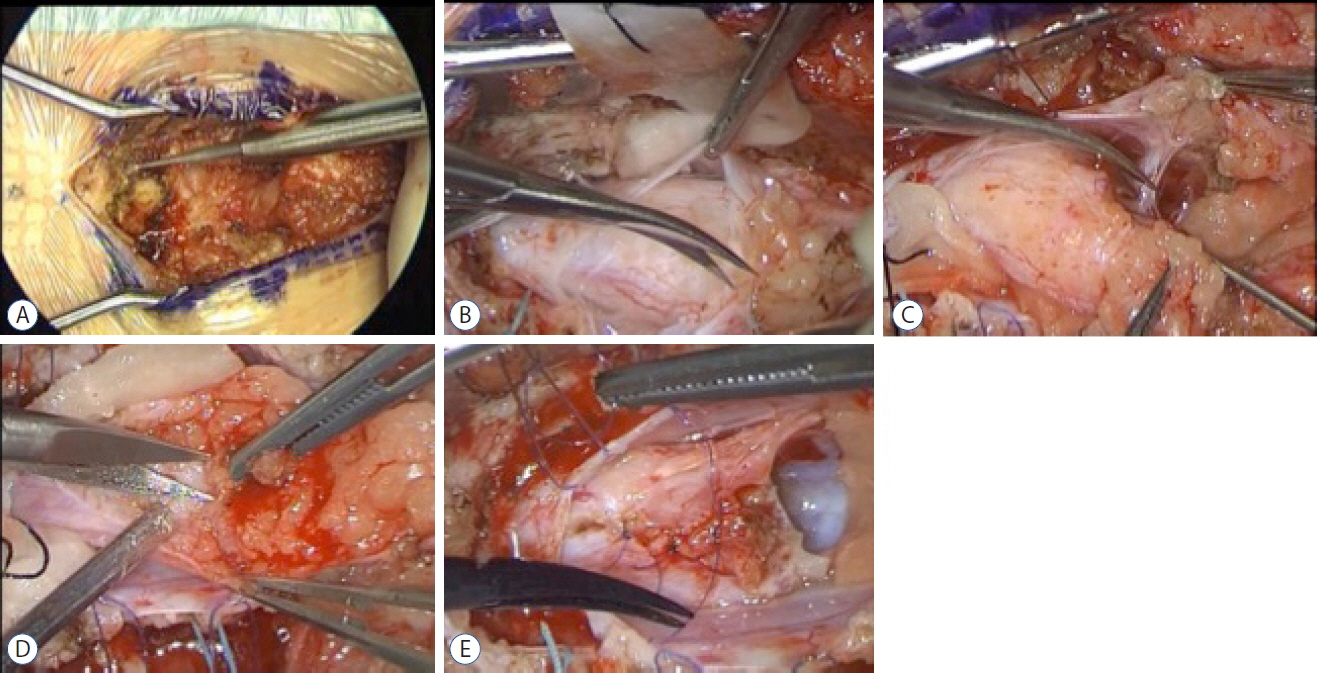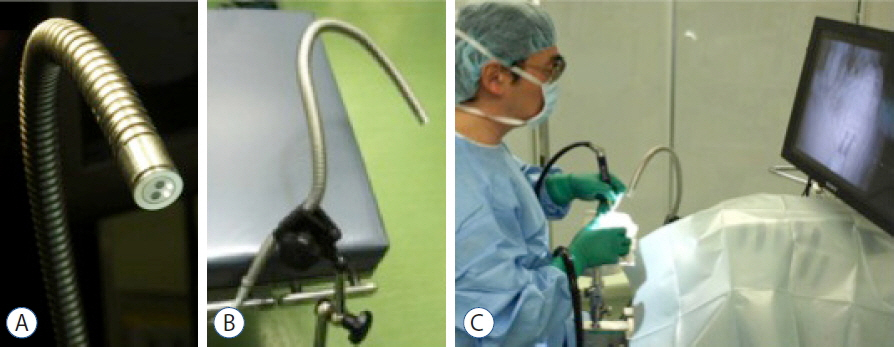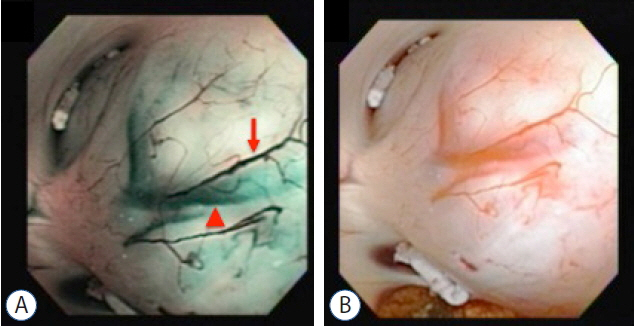J Korean Neurosurg Soc.
2017 May;60(3):289-293. 10.3340/jkns.2017.0202.003.
From Exoscope into the Next Generation
- Affiliations
-
- 1Department of Neurosurgery, Center for Neurological Diseases, Niigata Medical Center, Niigata, Japan. nishiken@d4.dion.ne.jp
- KMID: 2382762
- DOI: http://doi.org/10.3340/jkns.2017.0202.003
Abstract
- An exoscope, high-definition video telescope operating monitor system to perform microsurgery has recently been proposed an alternative to the operating microscope. It enables surgeons to complete the operation assistance by visualizing magnified images on a display. The strong points of exoscope are the wide field of view and deep focus. It minimized the need for repositioning and refocusing during the procedure. On the other hand, limitation of magnifying object was an emphasizing weak point. The procedures are performed under 2D motion images with a visual perception through dynamic cue and stereoscopically viewing corresponding to the motion parallax. Nevertheless, stereopsis is required to improve hand and eye coordination for high precision works. Consequently novel 3D high-definition operating scopes with various mechanical designs have been developed according to recent high-tech innovations in a digital surgical technology. It will set the stage for the next generation in digital image based neurosurgery.
MeSH Terms
Figure
Cited by 3 articles
-
Preface : Invited Issue Editor Professor Dachling Pang and the Changing Concepts in Spinal Dysraphism during the Last Two Decades
Chae-Yong Kim, Seung-Ki Kim
J Korean Neurosurg Soc. 2020;63(3):269-271. doi: 10.3340/jkns.2020.0064.Evaluation of 3-Dimensional Exoscopes in Brain Tumor Surgery
Wan-Soo Yoon, Hyoung-Woo Lho, Dong-Sup Chung
J Korean Neurosurg Soc. 2021;64(2):289-296. doi: 10.3340/jkns.2020.0199.Assessment and Comparison of Three Dimensional Exoscopes for Near-Infrared Fluorescence-Guided Surgery Using Second-Window Indocyanine-Green
Steve S. Cho, Clare W. Teng, Emma De Ravin, Yash B. Singh, John Y.K. Lee
J Korean Neurosurg Soc. 2022;65(4):572-581. doi: 10.3340/jkns.2021.0202.
Reference
-
References
1. Hopf NJ, Perneczky A. Endoscopic neurosurgery and endoscope-assisted microneurosurgery for the treatment of intracranial cysts. Neurosurgery. 43:1330–1336. discussion 1336–1337. 1998.
Article2. Hopf NJ, Kurucz P, Reisch R. Three-dimensional HD endoscopy – first experiences with the Einstein Vision system in neurosurgery. Innovative Neurosurgery. 1:125–131. 2013.
Article3. Inoue D, Yoshimoto K, Uemura M, Yoshida M, Ohuchida K, Kenmotsu H, et al. Three-dimensional high-definition neuroendoscopic surgery: a controlled comparative laboratory study with two-dimensional endoscopy and clinical application. J Neurol Surg A Cent Eur Neurosurg. 74:357–365. 2013.
Article4. Mamelak AN, Danielpour M, Black KL, Hagike M, Berci G. A high-definition exoscope system for neurosurgery and other microsurgical disciplines: preliminary report. Surg Innov. 15:38–46. 2008.
Article5. Mamelak AN, Nobuto T, Berci G. Initial clinical experience with a high-definition exoscope system for microneurosurgery. Neurosurgery. 67:476–483. 2010.
Article6. Nishiyama K, Natori Y, Oka K. A novel three-dimensional and high-definition flexible scope. Acta Neurochir (Wien). 156:1245–1249. 2014.
Article7. Oka K. Introduction of the videoscope in neurosurgery. Neurosurgery. 62(5 Suppl 2):ONS337–ONS340. discussion ONS341. 2008.
Article8. Shirzadi A, Mukherjee D, Drazin DG, Paff M, Perri B, Mamelak AN, et al. Use of the video telescope operating monitor (VITOM) as an alternative to the operating microscope in spine surgery. Spine (Phila Pa 1976). 37:E1517–E1523. 2012.
Article9. Tabaee A, Anand VK, Fraser JF, Brown SM, Singh A, Schwartz TH. Three-dimensional endoscopic pituitary surgery. Neurosurgery. 64(5 Suppl 2):288–293. discussion 294–295. 2009.
Article10. Yoshimoto K, Mukae N, Kuga D, Inoue D, Hashizume M, Iihara K. Dual optical channel three-dimensional neuroendoscopy: Clinical application as an assistive technique in endoscopic endonasal surgery. Interdiscip Neurosurg. 6:45–50. 2016.
Article
- Full Text Links
- Actions
-
Cited
- CITED
-
- Close
- Share
- Similar articles
-
- Evaluation of 3-Dimensional Exoscopes in Brain Tumor Surgery
- The Exoscope versus operating microscope in microvascular surgery: A simulation non-inferiority trial
- Early Experience, Setup, Learning Curve, Benefits, and Complications Associated with Exoscope and Three-Dimensional 4K Hybrid Digital Visualizations in Minimally Invasive Spine Surgery
- Assessment and Comparison of Three Dimensional Exoscopes for Near-Infrared Fluorescence-Guided Surgery Using Second-Window Indocyanine-Green
- Comparison of Radiation Dose and Image Quality between the 2nd Generation and 3rd Generation Dual-Source Single-Energy and Dual-Source Dual-Energy CT of the Abdomen





